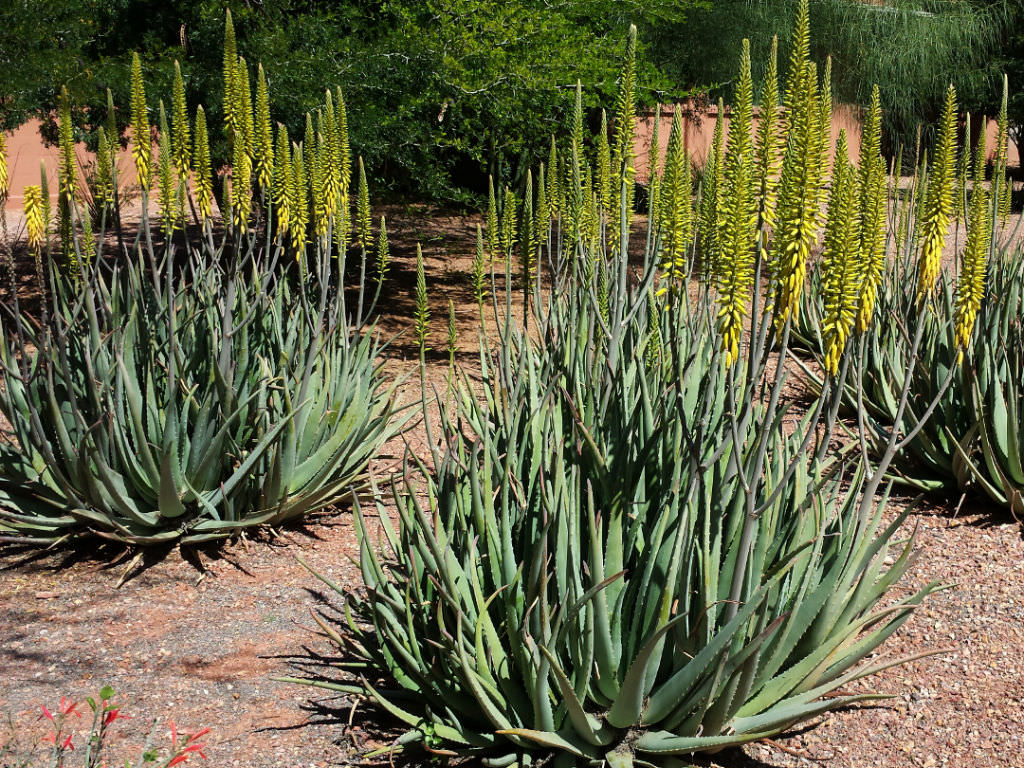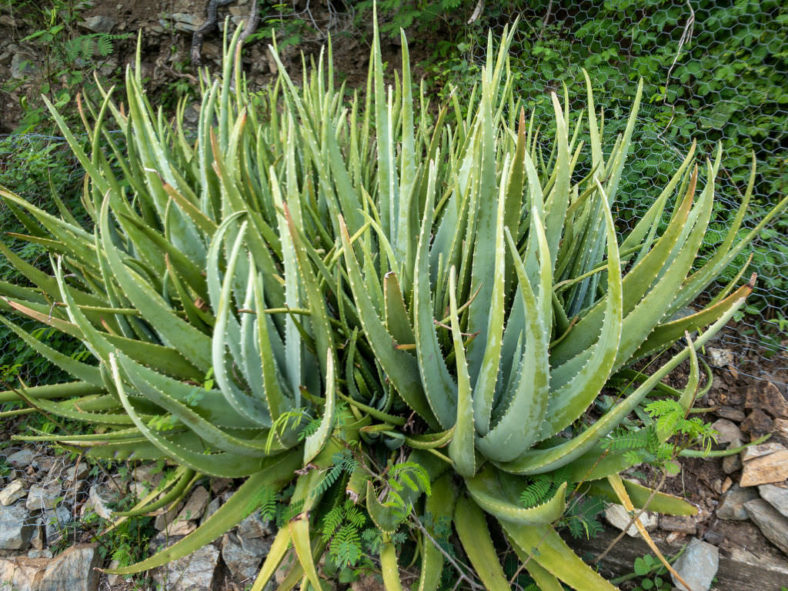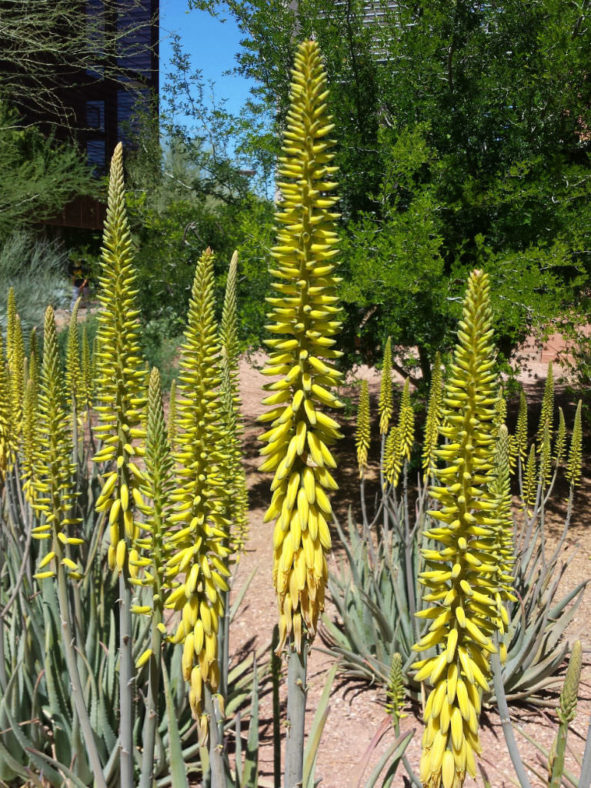Scientific Name
Aloe vera (L.) Burm.f.
Common Name(s)
Aloe Vera, Barbados Aloe, Bitter Aloe, Burn Aloe, Burn Plant, Chinese Aloe, Coastal Aloe, Common Aloe, First Aid Plant, Indian Aloe, Jaffarabad Aloe, Medicinal Aloe, Medicine Plant, Mediterranean Aloe, Miracle Plant, Savila, True Aloe, Wand of Heaven, West Indian Aloe
Synonym(s)
Aloe barbadensis, Aloe perfoliata var. barbadensis, Aloe perfoliata var. vera, Aloe vera var. chinensis
Scientific Classification
Family: Asphodelaceae
Subfamily: Asphodeloideae
Genus: Aloe
Etymology
The specific epithet "vera (VER-uh)" means "true, real" and refers to the status of the species as the "true Aloe."
Origin
Aloe vera is native to the Hajar Mountains in northeastern Oman on the Arabian Peninsula, but now it grows wild in tropical, semi-tropical, and arid climates worldwide.
Description
Aloe vera is a well-known succulent that forms stemless or short-stemmed rosettes of thick, fleshy, grey-green leaves with sparsely dentate margins. It offsets freely at the base to create a cluster of rosettes. The leaves are erect, linear-lanceolate, and can grow up to 2 feet (60 cm) long and 2.8 inches (7 cm) wide.
The flowers are pendulous, with a yellow tubular corolla, and usually appear densely packed on sparsely branched stalks that can reach up to 3 feet (90 cm) in height, usually in winter and spring.

How to Grow and Care for Aloe vera
Light: When growing Aloe vera indoors, place your plant near a window with plenty of bright indirect sunlight. Rotate the pot once or twice a week so that all sides of the plant receive equal lighting. Outdoors provide light shade, especially during the hottest parts of the day.
Soil: Grow this plant in a well-drained soil mix formulated for succulents, or make your own. Drainage is essential because too much moisture around roots can cause root rot.
Hardiness: When temperatures shift below 50 °F (10 °C), it is time to bring your plant back inside. Aloe vera grows best in USDA Plant Hardiness Zones 9b to 11b, with average minimum winter temperatures ranging from 25 to 50 °F (-3.9 to 10 °C).
Watering: This succulent needs regular watering but is very tolerant of short periods of drought. Water deeply, but only when the soil is dry. Cut back on watering during the winter months. Do not let water stand in the rosettes.
Fertilizing: Aloe vera generally does not require fertilizer but may benefit from the extra nutrients. Feed with a fertilizer for succulents in spring and summer only. Be sure to follow the label directions.
Repotting: This plant is not particularly fast-growing and will only rarely need repotting. To prevent it from becoming pot-bound, repot it in the spring in a container a few inches larger in diameter every few years.
Propagation: Aloe vera can be propagated using offsets, cuttings, or seeds from a mature plant. Remove offsets from the mother plant or take cuttings with a sharp knife in late spring or early summer. For best results, sow seeds during the warm months.
Learn more at How to Grow and Care for Aloe.
Uses of Aloe vera
Aloe vera has been used as a traditional medicine in various cultures for millennia. References can be found in China, India, Japan, Greece, Egypt, and Mexico.
Learn more at The Health Benefits of Aloe Vera.
Toxicity of Aloe vera
Although Aloe vera has multiple health benefits, it is mildly to moderately toxic to cats and dogs.
Forms and Varieties of Aloe vera
Links
- Back to genus Aloe
- Succupedia: Browse succulents by Scientific Name, Common Name, Genus, Family, USDA Hardiness Zone, Origin, or cacti by Genus
Photo Gallery
Click on a photo to see a larger version.



